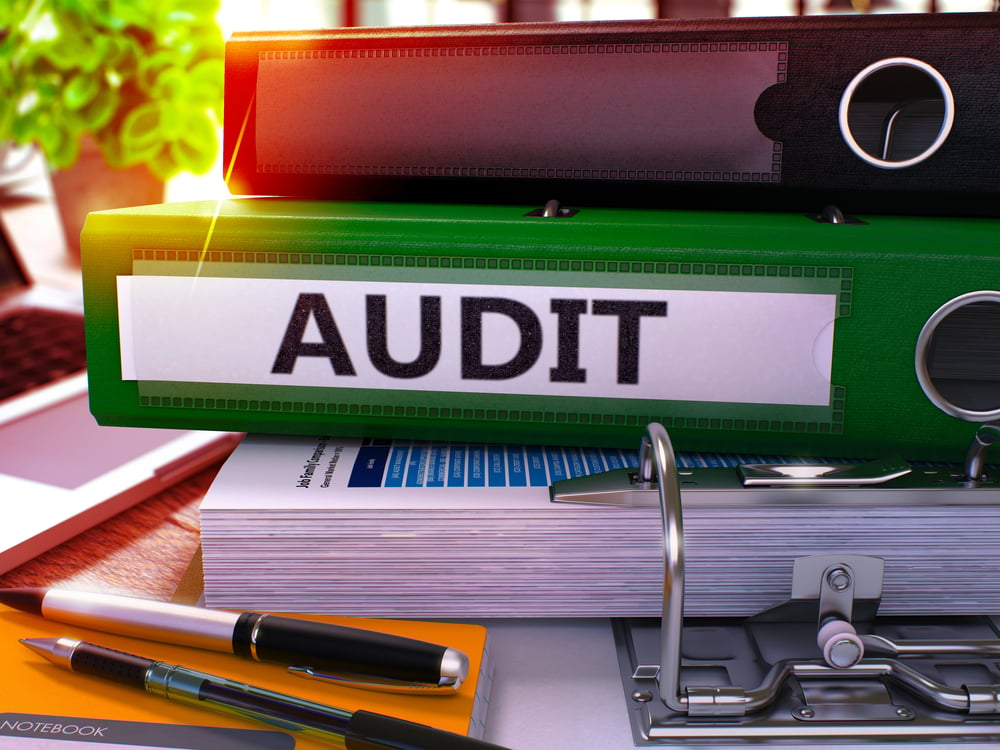Anti-Money Laundering Compliance Officer Training program Overview:
Auditing and Monitoring Compliance
Organizations face many compliance risks. To manage these risks, organizations must have an effective compliance program in place. An important part of an effective compliance program is auditing and monitoring. Auditing and monitoring can help organizations detect and prevent non-compliance with laws and regulations.
What is auditing?
An audit is defined as an independent examination of financial information of any entity, whether profit-oriented or not, and irrespective of its size or legal form, when such an examination is conducted with a view to expressing an opinion thereon" (International Organization of Supreme Audit Institutions). In other words, auditing is the process of reviewing the financial statements of an organization to ensure that they are accurate and comply with generally accepted accounting principles (GAAP).
There are two main types of audits: financial audits and operational audits. Financial audits are conducted to assess the accuracy of an organization's financial statements, while operational audits are conducted to evaluate the efficiency and effectiveness of an organization's operations. Internal audits are conducted by employees of the organization being audited, while external audits are conducted by independent third-party organizations.
The audit process typically consists of four steps: planning, fieldwork, reporting, and follow-up. During the planning stage, the auditor establishes the scope and objectives of the audit. The fieldwork stage involves collecting and analyzing data. The reporting stage is when the auditor presents the findings of the audit. The follow-up stage is when the auditor ensures that corrective action has been taken to address any problems identified during the audit.
What is monitoring?
Monitoring is the continuous or periodic assessment of compliance with laws, regulations, contracts, and internal policies and procedures. Monitoring can be done internally by employees of the organization or externally by independent third-party organizations.
Monitoring can take many forms, but all forms have one common goal: to identify potential compliance risks and prevent or mitigate those risks. Common methods of monitoring include reviews, audits, inspections, and investigations.
Reviews are less formal than audits and typically involve a review of documents and records. Audits are more formal than reviews and usually involve interviews with employees, observations of processes, and testing of controls. Inspections are conducted to ensure that facilities meet safety and health standards. Investigations are conducted to gather evidence about potential violations of laws or regulations.
Organizations should choose the monitoring method that is most appropriate for their needs and resources. No single monitoring method is perfect, and each has its own advantages and disadvantages.
Advantages of auditing:
- Audits can provide objective and reliable assurance about the financial statements of an organization.
- Audits can help organizations detect and prevent fraud.
- Audits can help organizations identify and correct internal control weaknesses.
Disadvantages of auditing:
- Audits can be costly and time-consuming.
- The results of an audit may be subject to interpretation.
Advantages of monitoring:
- Monitoring can help organizations detect and prevent compliance risks.
- Monitoring can help organizations identify and correct internal control weaknesses.
- Monitoring can be less costly and time-consuming than auditing.
Disadvantages of monitoring:
- The results of monitoring may be subject to interpretation.
- Monitoring may not provide the same level of assurance as auditing.
Benefits of auditing and monitoring include improved financial reporting, increased transparency, enhanced risk management, and improved decision-making. Challenges of auditing and monitoring include the high cost of conducting audits, the potential for conflict of interest, and the risk of bias.
Auditing and monitoring are important tools that can be used to improve the financial reporting of an organization. However, there are challenges associated with auditing and monitoring that must be considered when deciding whether or not to implement these procedures.
What is Auditing and Monitoring Compliance?
Auditing and Monitoring compliance is the process of assessing an organization's compliance with internal policies and external regulations. The purpose of this assessment is to identify any areas where the organization is not in compliance, and to develop a plan to address those non-compliant areas.
Organizations typically audit and monitor their compliance on a regular basis, in order to ensure that they are meeting all of their obligations.Auditing and monitoring compliance can be a complex and time-consuming process, but it is essential to the success of any organization.
Compliance audits help organizations identify potential risks and liabilities, and develop plans to mitigate those risks. Additionally, audits can provide valuable feedback to management on the effectiveness of compliance programs.
Monitoring compliance also helps organizations to identify trends and issues that may impact their compliance posture. By tracking compliance data, organizations can make necessary changes to their policies and procedures to ensure they are meeting all of their regulatory requirements.Auditing and monitoring compliance is an important part of any organization's risk management strategy.
Compliance audits help organizations to identify areas of non-compliance, and develop plans to address those risks. Additionally, compliance monitoring helps organizations to identify trends and issues that may impact their compliance posture.Organizations should audit and monitor their compliance on a regular basis to ensure they are meeting all of their obligations.Auditing and monitoring compliance is essential to the success of any organization.
Risk assessment:
Organizations should audit and monitor their compliance on a regular basis to ensure they are meeting all of their obligations. One way to do this is through risk assessment. Risk assessment is the process of identifying, analyzing, and assessing the risks an organization faces.
Risk assessment helps organizations to identify potential compliance risks and develop plans to mitigate those risks. Additionally, risk assessment can provide valuable feedback to management on the effectiveness of compliance programs.
Organizations should assess their compliance risks on a regular basis, in order to ensure that they are taking all necessary steps to mitigate those risks. Risk assessment is an essential part of any organization's risk management strategy.
Objective assessment:
One way to do this is through objective assessment. Objective assessment is the process of assessing an organization's compliance with internal policies and external regulations.
Objective assessment helps organizations to identify any areas where the organization is not in compliance, and to develop a plan to address those non-compliant areas. Additionally, objective assessment can provide valuable feedback to management on the effectiveness of compliance programs.
Compliance audits:
Compliance audits are another important tool that organizations can use to ensure they are meeting all of their obligations. A compliance audit is an assessment of an organization's compliance with internal policies and external regulations.
The purpose of a compliance audit is to identify any areas where the organization is not in compliance, and to develop a plan to address those non-compliant areas. Compliance audits help organizations to identify potential risks and liabilities, and develop plans to mitigate those risks. Additionally, compliance audits can provide valuable feedback to management on the effectiveness of compliance programs.
Auditing and monitoring program:
Organizations should have an auditing and monitoring program in place to ensure they are meeting all of their obligations. The auditing and monitoring program should include both compliance audits and compliance monitoring.
Ongoing auditing:
Organizations should audit their compliance on a regular basis, in order to ensure that they are meeting all of their obligations. Compliance audits help organizations to identify potential risks and liabilities, and develop plans to mitigate those risks. Additionally, compliance audits can provide valuable feedback to management on the effectiveness of compliance programs.
Ongoing monitoring process:
Organizations should also have an ongoing monitoring process in place to identify trends and issues that may impact their compliance posture. Compliance monitoring helps organizations to identify areas of non-compliance, and develop plans to address those risks. Additionally, compliance monitoring can provide valuable feedback to management on the effectiveness of compliance programs.
Compliance risk issues:
Organizations should be aware of the compliance risks that they face, and take steps to mitigate those risks. Compliance risks can come from a variety of sources, including internal policies and procedures, external regulations, and third-party vendors.
Audit objectives:
The objectives of a compliance audit are to identify any areas where the organization is not in compliance, and to develop a plan to address those non-compliant areas. Additionally, compliance audits can provide valuable feedback to management on the effectiveness of compliance programs.
Scope of an audit:
The scope of a compliance audit depends on the organization being audited, but typically includes an assessment of the organization's compliance with internal policies and procedures, as well as external regulations. Additionally, compliance audits may also assess the effectiveness of compliance programs.
Compliance committee:
Organizations should have a compliance committee in place to oversee the compliance function. The compliance committee should be responsible for developing and implementing compliance policies and procedures, as well as overseeing the compliance function. Additionally, the compliance committee should be responsible for reviewing and approving all compliance audits.
The role of the compliance officer:
The compliance officer is responsible for developing and implementing compliance policies and procedures, as well as overseeing the compliance function. Additionally, the compliance officer should be responsible for conducting compliance audits, and reporting the results of those audits to the compliance committee.
The benefits of a compliance program:
A compliance program can provide numerous benefits to an organization, including reducing risks and liabilities, improving operational efficiency, and increasing transparency. Additionally, a compliance program can provide valuable feedback to management on the effectiveness of compliance programs.
The challenges of implementing a compliance program:
Implementing a compliance program can be challenging for organizations. Some of the challenges that organizations face when implementing a compliance program include developing effective policies and procedures, ensuring adequate resources are in place, and maintaining compliance with changing regulations. Additionally, organizations may also face challenges when trying to engage employees in the compliance program.
The importance of training and education:
Training and education are essential components of an effective compliance program. Employees must be properly trained on the organization's compliance policies and procedures. Additionally, employees should be provided with periodic updates on changes to the compliance program.
The role of technology:
Technology can play a significant role in an organization's compliance program. Technology can be used to automate and streamline compliance-related processes, as well as to monitor compliance risks. Additionally, technology can be used to provide employees with access to compliance-related information and resources.

Auditing and Monitoring Compliance Training
Course overview:
This compliance training course will provide delegates with an understanding of how to conduct audits and monitor internal controls. The course will cover the different types of audits, how to develop audit plans, and the process of auditing and monitoring internal controls.
Objectives:
By the end of this compliance training course, delegates will be able to:
- Understand the different types of audits and how to develop audit plans
- Conduct audits and monitor internal controls effectively
- Understand the process of auditing and monitoring compliance with laws and regulations.
Who should attend?
This compliance training course is designed for those who are responsible for conducting audits and monitoring internal controls within their organisation.
Course Outline:
- Introduction to compliance audits and monitoring
- The different types of compliance audits
- How to develop an audit plan
- Conducting the audit or review
- Monitoring internal controls
- The importance of compliance with laws and regulations.



